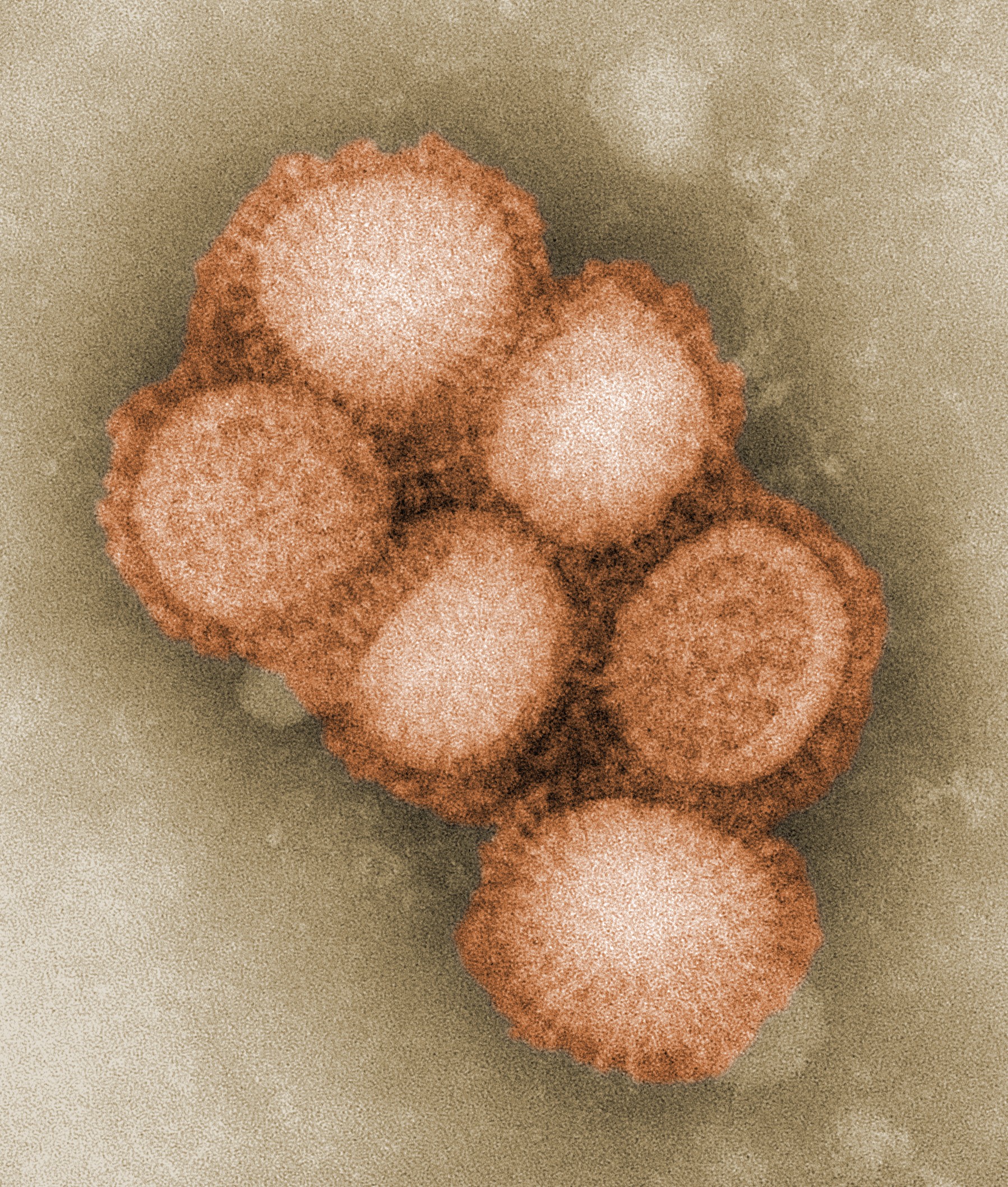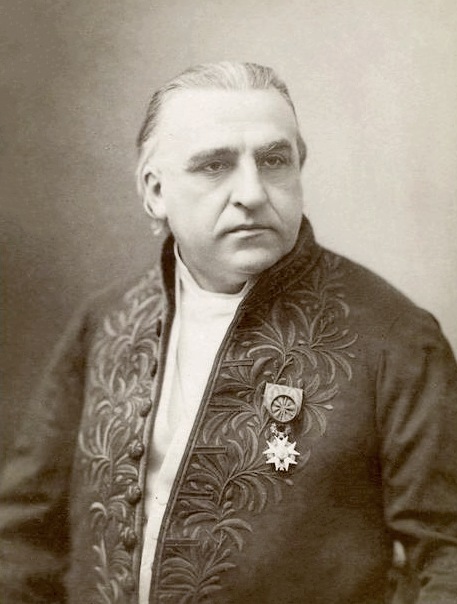 |
| Colourised electron microscope photograph of the H1N1 virus (CDC) |
Below is a brief chronological history of what transpired in the island nation of Bahrain as it coped with the H1N1 pandemic. It begins chronologically and ends in the winter of 2009 when swine flu statistics were no longer published. I previously posted the below to Wikipedia back in 2012.
As It Happened:
On 27 April 2009, Bahrain's health ministry declared the country to be free from the flu, citing that pig farms do not exist in the country and that live pork is not imported into the country.[1] On 28 April, Bahraini MPs from the Al Asalah Salafi party called for the prohibition of pork products in the country.[2] On 30 April, Bahrain banned pork imports from the United States and Mexico where the bulk of its imports originate from, with the Ministry of Health stating that the country is taking extra precautions despite the World Health Organization stating that the flu cannot be contracted via the consumption of pork.[3] The Ministry announced the creation of isolation wards in the country's main hospitals and also recommended that people should avoid hugging and kissing, so as to avoid contact with infected individuals.[4][5] Also on the same day, it was announced that passengers arriving through the Bahrain International Airport would be screened and would also send suspicious flu patients to isolation wards.[4] It was also announced that pharmacies in the country were stockpiled with enough Tamiflu (an antiviral medication for influenza) to cover 20% of the population.[6] A special hotline was also set up.[7]
Concerns began to emerge in the country about whether or not the health care sector could handle the influx of flu patients.vThe Ministry of Health set up screening facilities on the King Fahd Causeway to screen travelers entering the country.[8] On 1 May, it was announced that a 41-year-old male American traveler and a female passenger from Paris were quarantined at Salmaniya Medical Complex after displaying flu-like symptoms. However, both passengers tested negative to H1N1 tests.[9] On 26 May, a Bahraini student who had recently arrived from New York was confirmed as having contracted the flu; he was the first confirmed case of swine flu to hit the island country. It is also the first case involving a Gulf national contracting the disease. Health officials have stated the boy had suffered a mild form of the disease and was discharged from the hospital after spending five days in quarantine.[10] On 15 June, seven Bahraini students, all age 17, tested positive for the H1N1 virus.[11] The students were among a group of students who had recently returned from a student exchange program in the United States.[11] On 17 June, three more Bahrainis tested positive for the flu, all of whom were in contact with the previous seven students.[12]
In July, the Ministry of Health launched an awareness campaign ahead of the start of the academic year, with many fearing the reopening of schools would lead to a much greater outbreak of the flu.[13] By early August, 18 confirmed cases of the flu were reported.[14] Haj travel agencies have reported that thousands of Bahraini pilgrims have cancelled their trips to Mecca over fears of contracting swine flu.Over 180 confirmed cases of the flu were reported in late August, all of whom had returned from traveling abroad.[15]
On 31 August, a 30-year-old Filipino housemaid died after contracting the H1N1 virus, becoming Bahrain's first confirmed death as a result of the virus.[16] On 3 September, it was reported that a 24-year-old Bahraini man died after succumbing to the H1N1 virus, being the first Bahraini to die of the disease.[17] He was pronounced dead at BDF Hospital and there were allegations that he had been earlier misdiagnosed by a private hospital.[17] On 8 September, it was announced that patients with flu-like symptoms would be treated with Tamiflu nationwide, regardless of having a fever or not. It was also announced that a million doses of the swine flu vaccine were ordered.[18] The Bahraini Ministry of Education had decided to postpone the opening of schools until October as a precaution, a decision that drew criticism from the World Health Organization.[19] In November 2009, the government stated that up to 1,346 cases of the H1N1 virus were confirmed in the country, along with 15,000 suspected cases of the virus.[20]
References:
- Bahrain Flu Free says health ministry". TradeArabia(via HighBeam Research). 27 April 2009. Archived from the original on 17 May 2013. Retrieved 1 September 2012.
- "Bahraini MPs call for ban on pork". Arab News (via HighBeam Research). 29 April 2009. Archived from the original on 17 May 2013. Retrieved 1 September 2012.
- "Bahrain curb on pork imports". TradeArabia (via HighBeam Research). 30 April 2009. Archived from the original on 17 May 2013. Retrieved 1 September 2012.
- "Fever patients quizzed in Bahrain flu alert". TradeArabia(via HighBeam Research). 30 April 2009. Archived from the original on 17 May 2013. Retrieved 1 September 2012.
- "'Avoid hugs and kisses' says health officer". TradeArabia(via HighBeam Research). 30 April 2012. Archived from the original on 17 May 2013. Retrieved 1 September 2012.
- ^ "Municipalities bracing for possible swine flu outbreak". Arab News (via HighBeam Research). 4 May 2009. Archived from the original on 17 May 2013. Retrieved 1 September 2012.
- "Bahrain launches swine flu hotline". Trade Arabia (via HighBeam Research. 5 May 2009. Archived from the original on 17 May 2013. Retrieved 1 September 2012
- "Flu vigil 'vital' for Bahrain". TradeArabia. 14 May 2009. Archived from the original on 17 May 2013. Retrieved 1 September 2012.
- ^ "US National is First Suspected Swine Flu Case in Bahrain". News Blaze. 1 May 2009. Retrieved 1 September 2012.
- "Bahrain confirms 1st case of swine flu". TradeArabia(via HighBeam Research). 26 May 2012. Archived from the original on 17 May 2013. Retrieved 1 September 2012.
- "7 Bahraini students hit by swine flu". TradeArabia. 15 June 2009. Archived from the original on 17 May 2013. Retrieved 1 September 2012.
- ^ "Bahraini swine flu cases rise". TradeArabia. 17 June 2009. Archived from the original on 17 May 2013. Retrieved 1 September 2012.
- "'Swine flu' alert as schools close for summer". Gulf Weekly (via HighBeam Research). 12 July 2009. Archived from the original on 17 May 2013. Retrieved 1 September 2012.
- "Swine flu fight is on". Gulf Weekly (via HighBeam Research). 9 August 2009. Archived from the original on 17 May 2013. Retrieved 1 September 2012.
- "Flu scare hits Umrah trips from Bahrain". TradeArabia (via HighBeam Research). 23 August 2009. Archived from the original on 17 May 2013. Retrieved 1 September 2012.
- "Bahrain reports first swine flu death". TradeArabia (via HighBeam Research. 31 August 2009. Archived from the original on 17 May 2013. Retrieved 1 September2012.
- "Second flu death in Bahrain". Trade Arabia (via HighBeam Research). 3 September 2009. Archived from the original on 17 May 2013. Retrieved 1 September2012.
- "Bahrain to treat all flu patients with Tamiflu". TradeArabia. 8 September 2009. Archived from the original on 17 May 2013. Retrieved 1 September 2012.
- "WHO raps Bahrain schools delay". TradeArabia (via HighBeam Research). 9 September 2009. Archived from the original on 17 May 2013. Retrieved 1 September2012.
- "Flu cases top 1,346 in Bahrain". TradeArabia. Archived from the original on 17 May 2013. Retrieved 1 September 2012






.jpg)